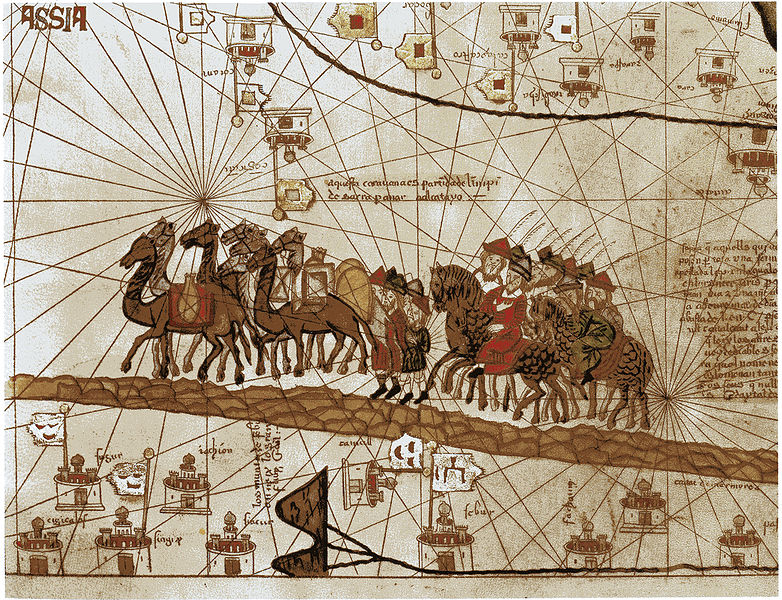Home » Posts tagged 'religion' (Page 2)
Tag Archives: religion
Njáls Saga
(Njála)
anonymous (Icelandic)
1270-1290
(A sage in medieval Iceland attempts to restore order in the face of bloody vengeance and warrior’s honor)

The mighty deeds of a free people in struggle are frequently represented in timeless literature—such stories will never go stale. Whether tossed on the stormy Mediterranean, afoot in the forests and scrublands of India, or galloping through prairie grasses among stalwart buttes in the American West, there is something deeply inspiring about a small people forging a life in the face of privation, violence, and treachery. We who live in the comfort of civilization can be tempted to think that a reasonably stable government and the rule of law are guaranteed, automatic, assumed. Or, even if we endure corruption, are wary of the tyranny or selfishness of our leaders, or have suffered at the hands of criminals, we are among millions and are likely to see ourselves as puny actors on an immense stage—what can we possibly do?! How fascinating, then, are the tales of those who managed to defend some fragile order amidst a storm of chaos—those whose survival was assured not by the actions of others, whether their venerated ancestors or soldiers on distant front lines, but by themselves: by the wisdom of their own minds, the words that passed through their own lips, and the swords that hung from their own belts. The Icelandic Sagas—the Íslendingasögur—are epic narratives of this very sort. A man in the Age of Saga, so we are told, could cut his own destiny, no matter what coarse fabric sought to hem him in. And a woman could make the best of things by controlling the men. Anyone who wishes to see how this sort of lifestyle could play out can do no better than to read Njáls Saga (or, in the alternative title that is at once a spoiler, the Saga of Burnt Njál). The professionals tend to consider this the greatest and most well-developed of the 40 or so Icelandic Sagas that were written in the 13th-14th centuries. Whatever the critics say, here we certainly find hefty measures of all the most engaging ingredients in that genre: the bloody swinging of swords and thrusting of spears, the uncompromising defense of honor, the defiant challenge of the sea, the tenuous rise of God over the idols and of Law over bloody feuds, the disastrous fruits of pride and envy, the sly instigations of women, the mystic power of prophecy and fate, the iron duty of loyalty, and the deathgrip of revenge!
The Travels
(Il Milione)
Marco Polo
(with Rustichello of Pisa)
1299
(An Italian explorer treks fearlessly into the unknown East, and discovers astonishing cultures and kingdoms no European had ever seen).

We are fortunate that Marco Polo lived long enough and expended the energy to record the greatest travels ever performed by any man to his time and for very long afterwards. He dictated– apparently from memory– his adventures to a romance-writer Rustichello of Pisa while they were prisoners of war in Genoa. No repetitive or trivial diarizing here—this is a very entertaining work, often fascinating and at times hilarious. I am struck, as Polo was, by the variety of customs observed in the many areas through which he trekked. I am also intrigued by the amount of wealth those in power were able to amass; such wealth that Kublai Khan, for the prime example, could romp in several sumptuous palaces with manicured grounds and scenic paths like those of the richest modern European monarch. It surely seems that the book’s two repeated claims may well be true: that Marco Polo had traveled further and knew more of the world than any other man who had ever lived; and that the Mongol empire under Kublai Khan was the largest empire in subjects and geographical area ever to have existed.



Uncle Tom’s Cabin
December 28, 2014 / Leave a comment
Harriet Beecher Stowe
1852
(Two slaves struggle mightily: one for her liberty, the other for his integrity.)
This novel, the best selling book in the nineteenth century besides the Bible, is a remarkably forceful argument against the world’s most blatant form of widespread institutionalized violation of human rights. It is a collage of slave lives and lifestyles assembled with a thin glue of plot, all combining to urge our sympathies with the slaves and our antipathy to the injustice of their condition. It is an effort to bring free people to the realization that slaves are real persons who have the same sorts of spirits and minds as their masters, and yet they are and will always be subject to all sorts of anguish, suffering, and torture until slavery is abolished. “It is a comfort to hope,” Harriet Beecher Stowe writes in the Preface, “as so many of the world’s sorrows and wrongs have, from age to age, been lived down, so a time shall come when sketches similar to these shall be valuable only as memorials of what has long ceased to be.” We can be thankful that the author’s hope came true– the book served phenomenally well the purpose for which Stowe designed it. Testament to this are its enormous sales, the several hasty rebuttal “slavery isn’t so bad” novels, and, perhaps more than anything else, the comment of Abraham Lincoln when he met the author, calling her the “little woman whose book started this big war”.
(more…)